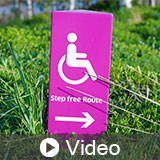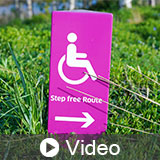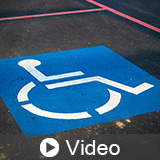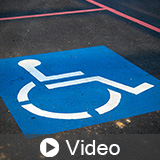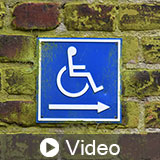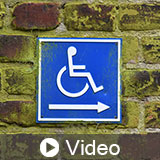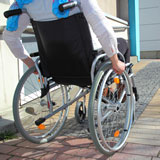What professional responsibility do we bear for the environmental impact of our designs? In this thought-provoking course, participants will delve into the critical ethical dimensions of sustainable design that shape our built environment for generations to come. Explore how the AIA and ASCE Codes of Ethics translate int...
L'Ordre des architectes du Québec
The Order of Architects of Quebec (OAQ) is the professional association that regulates and supports the practice of architecture in the province of Quebec, Canada. Its mission is to ensure the competence, ethics, and integrity of architects, promoting the profession's public trust and advancing the quality of built environments. The OAQ oversees the licensing and certification of architects, ensuring they meet the highest standards of education, experience, and professional conduct. The organization also advocates for the interests of architects, provides professional development opportunities, and plays a key role in shaping the architectural landscape of Quebec through various initiatives and policy recommendations.
147 Online Courses
Premium Course
|
|
This comprehensive course equips design professionals with essential knowledge about per- and polyfluoroalkyl substances (PFAS), commonly known as forever chemicals, and their pervasive presence in building materials. You'll discover how these persistent chemicals impact human health and the environment while learning pr...
|
|
What if buildings weren’t just structures—but vessels for memory, imagination, and the ghosts of what might have been? Join us as we explore how architecture holds onto dreams and disappointments, carrying the echoes of modernism’s bold promises of infinite progress. We'll look at sustainable design not just as a technic...
|
|
This course provides architects and engineers with a comprehensive overview of the critical requirements of the Americans with Disabilities Act (ADA) as they apply in 2023 and beyond. Participants will gain practical guidance on designing accessible spaces, ensuring code compliance, and avoiding common pitfalls in archit...
|
|
Learn the key things you MUST know regarding ADA compliance as an Architect and Engineer
|
|
This course provides architects and engineers with a detailed examination of accessible routes as required under the Americans with Disabilities Act (ADA) in 2023. Participants will learn what to look for when designing, evaluating, and documenting accessible paths, including sidewalks, ramps, corridors, and building ent...
|
|
Learn about accessible routes, what to know, what to look for.
|
|
In depth review of parking according to the ADA. The speaker will cover the definitions and learn about parking spaces and the number of accessible parking spaces required.
|
|
In depth review of parking according to the ADA. The speaker will cover the definitions and learn about parking spaces and the number of accessible parking spaces required.
|
|
An advanced discussion over toilet rooms according to the 2010 ADA Standards.
|
|
An advanced discussion over toilet rooms according to the 2010 ADA Standards.
|
|
This course provides architects and engineers with a comprehensive review of key ADA requirements related to doors, protruding objects, sales and service counters, and dining and seating areas. Participants will explore practical strategies for designing and evaluating these elements to ensure accessible, functional, and...
|
|
Learn about Doors, Signage, Counters and Seating and the ADA.
|
|
A workplace is a complicated space when it comes to understanding the requirements for accessibility. Some spaces are exempted while some require full access. This seminar gives an overview of what requirements exist in the ADA about work areas and when the ADA Standards apply.
|
|
Welcome to a journey that will fundamentally challenge how you think about sustainable design. This course pushes far beyond the conventional net-zero checklists that have dominated green building practice for the past two decades. Instead, we're going to explore what happens when buildings become living entities, when c...
|
|
In this course, we explore strategies to improve indoor air quality and how to achieve the LEED v4.1 BD+C and ID+C EQ Low-Emitting Materials credit. In addition, we review the applicable requirements such as (CDPH) Standard Method v1.2–2017. Finally, we discuss how buildings with excellent indoor environmental quality pr...
|
|
Welcome to this comprehensive exploration of Stockholm Wood City, one of the world's most ambitious mass timber developments. This course examines how this groundbreaking project is reshaping urban construction through innovative use of Cross-Laminated Timber (CLT) and other engineered wood products. We'll dive deep into...
|
|
The LEED v4.1 Materials and Resources (MR) credit category focuses on minimizing the embodied energy and other impacts associated with the extraction, processing, transport, maintenance, and disposal of building materials. The requirements are designed to support a life-cycle approach that improves performance and promot...
|
|
In this course, we explore how Health Product Declarations (HPDs) contribute to the LEED v4.1 rating system. Our team discusses how design professionals can achieve the LEED v4.1 BD+C and ID+C Material Ingredients credit. In addition, we review the HPD Open Standard and discuss how it can influence design professionals t...
|
|
Have you ever wondered about the untapped potential of esoteric design strategies in shaping the future of sustainable architecture? What design strategies are innovators, disruptors, and mavericks using to advance sustainable design? In this course we explore uncommon LEED v4.1 BD+C pilot credits and review how projects...
|








